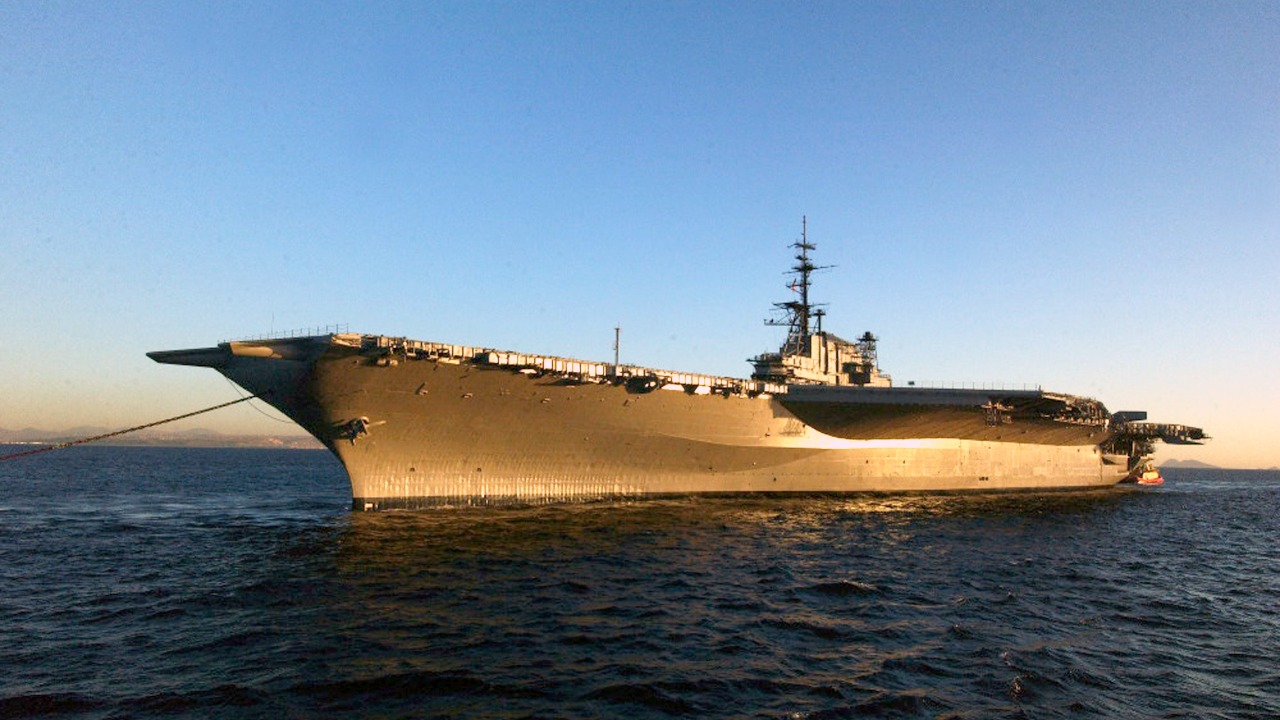
The Midway-Class Aircraft Carriers, often referred to as “battlecarriers”, were a significant milestone in the evolution of U.S. naval power. These massive vessels, which served from the end of World War II through the Cold War, combined heavy armor with air wing capabilities to dominate sea conflicts. Their enduring legacy continues to offer strategic insights for the modern U.S. Navy.
Historical Development and Launch
The Midway-class carriers were conceived during World War II as an evolution from the earlier Essex-class carriers. This design shift was a response to emerging threats from long-range enemy aircraft. The lead ship, USS Midway, was launched on September 10, 1945, marking a significant transition for the Navy towards peacetime operations. It was followed by the commissioning of sister ships like the USS Franklin D. Roosevelt in 1945 and the USS Coral Sea in 1947.
Building these massive vessels was not without challenges. The shipyards, such as Newport News, had to accommodate the class’s unprecedented size. With a length of 1,001 feet and a full-load displacement exceeding 45,000 tons, the Midway-class carriers were a testament to American naval engineering prowess.
Design Innovations as ‘Battlecarriers’
The Midway-Class carriers were nicknamed “battlecarriers” due to their armored flight deck and heavy belt armor. These features allowed them to withstand kamikaze attacks and heavy gunfire, unlike their lighter contemporaries. The aviation facilities of these carriers were equally impressive, with three catapults and a capacity for up to 130 aircraft, enabling sustained air operations critical for power projection.
Engineering feats like the island superstructure placement and steam turbine propulsion delivering 144,000 shaft horsepower for speeds over 33 knots further underscored the innovative design of these carriers. These features not only enhanced their combat capabilities but also set a new standard for future carrier designs.
Role in Post-WWII Conflicts
During the Korean War, Midway-class carriers played a crucial role, providing close air support and interdiction missions from waters off Korea starting in 1950. Their involvement in the Vietnam War was equally significant, with ships like the USS Coral Sea conducting thousands of sorties from Yankee Station in the Gulf of Tonkin throughout the 1960s and 1970s.
Throughout the Cold War, these carriers participated in various exercises and crises, such as Mediterranean patrols and responses to Soviet naval expansions. Their presence underscored their value in deterrence and power projection, reinforcing the strategic importance of aircraft carriers in naval warfare.
Modernization and Extended Service
The Midway-class carriers underwent significant modernization to keep pace with evolving threats. The SCB-110 and SCB-101 refits in the 1950s and 1970s added angled flight decks, steam catapults, and enhanced radar systems. The operational endurance of these carriers was remarkable, with the USS Midway serving until 1992 after logging over 1.1 million miles and participating in the Gulf War’s Operation Desert Storm in 1991.
These carriers also witnessed significant changes in naval personnel policies. For instance, the USS Midway saw the integration of nuclear-capable aircraft and women in the 1990s, marking a shift towards a more inclusive and versatile naval force.
Strategic Pivots and Global Deployments
The Midway-class carriers were instrumental in implementing the U.S. Navy’s forward presence strategy. The USS Midway was homeported in Japan from 1973 to 1991, allowing for rapid response in the Western Pacific. These carriers were also involved in key events like the 1979 Iran hostage crisis response and 1980s Indian Ocean deployments amid tensions with the Soviet Union.
The combat effectiveness of these carriers is evident from the over 200,000 flight hours logged across the class during major operations. Their global deployments and strategic pivots underscored their versatility and adaptability in a rapidly changing geopolitical landscape.
Legacy and Message for Today’s Navy
The Midway-Class carriers have left an enduring legacy, influencing the design of supercarriers like the Nimitz and Ford classes. Their emphasis on survivability and air wing size continues to inform contemporary fleet design. The USS Midway, preserved as a museum ship in San Diego since 2004, serves as an educational hub for naval history, reminding us of the pivotal role these carriers played in shaping naval warfare.
Today, as the U.S. Navy faces new challenges such as hybrid warfare threats, the armored resilience of the Midway-class carriers could inform the design of next-generation carrier protections. Their legacy serves as a reminder of the importance of adaptability and innovation in maintaining naval supremacy.
Comparisons to Modern Carriers
Comparing the Midway-class carriers with modern carriers like the USS Gerald R. Ford reveals interesting contrasts and continuities. While the Midway-class carriers were steel-heavy, modern carriers emphasize electromagnetic catapults over traditional armor. However, both share the core mission of global strike capability.
Size evolution is another notable aspect. The Midway’s 45,000-ton displacement is dwarfed by Ford-class ships exceeding 100,000 tons. Yet, the Midway-class carriers’ heritage continues to inform ongoing debates about balancing cost, vulnerability, and firepower in peer conflicts with nations like China. Their enduring relevance underscores the pivotal role they played in the evolution of U.S. naval power.
More from MorningOverview